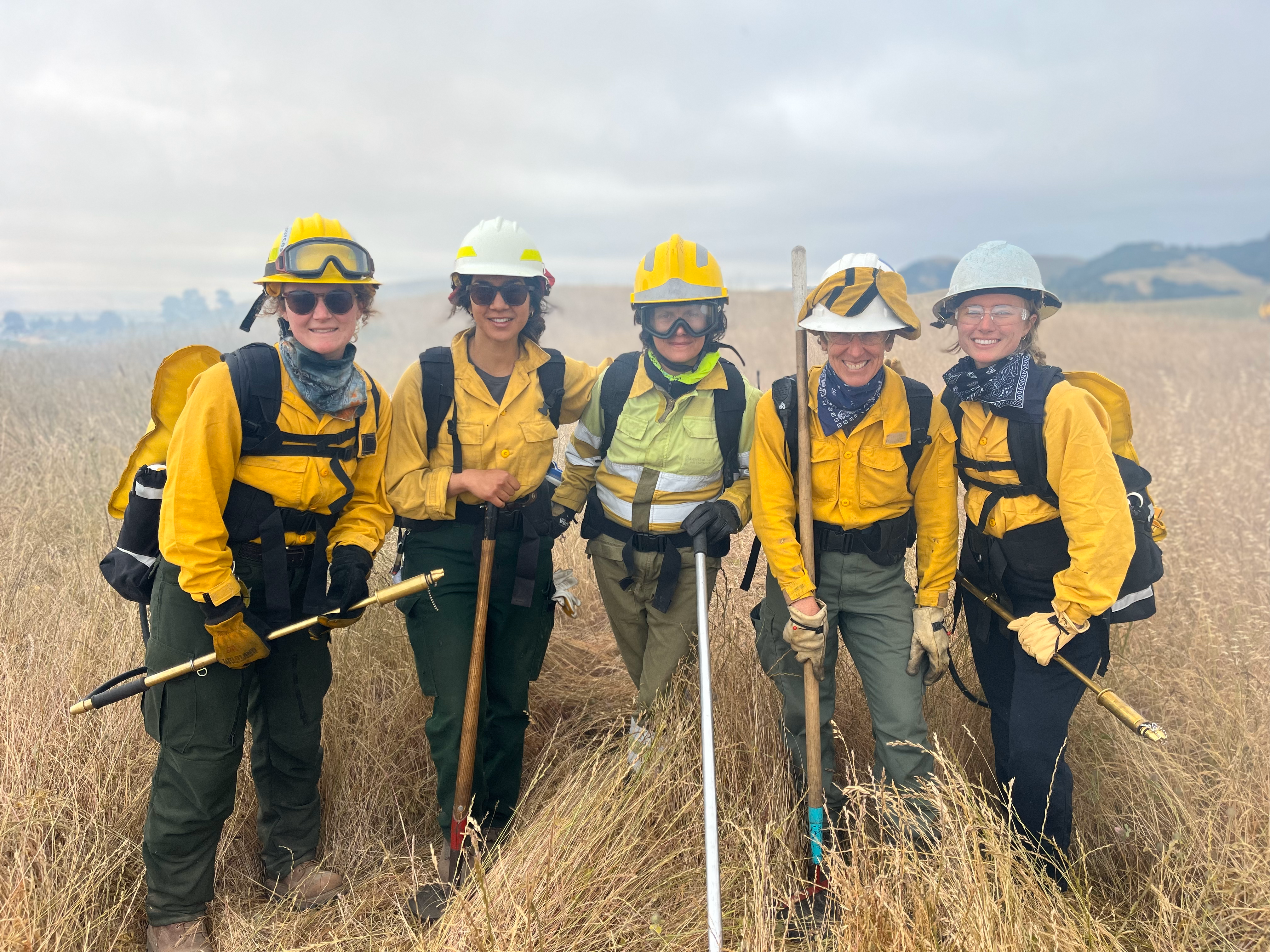COURSE DESCRIPTION:
The Basic Wildland Firefighter Training is designed to equip participants with the fundamental knowledge and skills required for effectively responding to wildland fires. This blended course combines online modules with practical field exercises to ensure a comprehensive learning experience. A blended Basic Wildland Firefighter course combines online learning with hands-on practical training. Students will have to complete the online course listed below, and attend the two day skills evaluation days to complete the course.
S-190 INTRODUCTION TO WILDLAND FIRE BEHAVIOR
This course provides instruction in the primary factors affecting the start and spread of wildfire and recognition of potentially hazardous situations. This course is typically taught in conjunction with or prior to "NWCG S-130, Firefighter Training (Wildland)."
The material is broken into 3 online modules (1 to 3 hours each).
After completing the online training required by your agency or department, a training officer or fire chief will evaluate required further training. The affiliated department can then certify students’ completion of this course by issuing the final certificate.
Please note: You must go through each module completely and successfully pass the end-of-module challenge review in order to receive credit for this course.
S-130 FIREFIGHTER TRAINING
This course addresses the foundational skills universal to all wildland firefighters.
The material is broken into 12 online modules (1 to 3 hours each) and a mandatory, instructor-led field day exercise. Each online module explains the concepts and skills that will be performed and evaluated on the field day exercise. Module 12 contains optional knowledge areas (pump operations, map and compass, fire investigation, and cultural resources) that are very useful concepts but not required due to time constraints.
After completing the online training required by your agency or department, a training officer or fire chief will evaluate required further training. The affiliated department can then certify students’ completion of this course by issuing the final certificate.
Please note: You must go through each module completely and successfully pass the end-of-module challenge review in order to receive credit for this course.
ICS-100, INTRODUCTION TO ICS
This foundation-level course is a web-based, self-study, interactive course that introduces the Incident Command System (ICS) and provides the foundation for higher-level ICS training. This course describes the history, features and principles, and organizational structure of the ICS. It also explains the relationship between ICS and the National Incident Management System.
This course was a collaborative development between the U.S. Fire Administration, the Federal Emergency Management Agency's Emergency Management Institute, and the National Wildfire Coordinating Group. Estimated completion time: 4 hours.
IS-700.B: AN INTRODUCTION TO THE NATIONAL INCIDENT MANAGEMENT SYSTEM
This course provides an overview of the National Incident Management System (NIMS). The National Incident Management System defines the comprehensive approach guiding the whole community - all levels of government, nongovernmental organizations (NGO), and the private sector - to work together seamlessly to prevent, protect against, mitigate, respond to, and recover from the effects of incidents. The course provides learners with a basic understanding of NIMS concepts, principles, and components.
L-180, HUMAN FACTORS IN THE WILDLAND FIRE SERVICE
Human Factors in the Wildland Fire Service" exposes students to human performance concepts as part of basic wildland firefighter training.
This course is specifically designed for entry-level operational personnel; however, this course also applies to all wildland fire service personnel, including nonoperational personnel. At the end of this online self-study course, students will be able to practice decision-making skills in an interactive simulation as a member of a fire crew and will apply their human factors knowledge to a variety of scenarios.
PREREQUISITES:
No prior experience in wildland firefighting is required, but participants should be in good physical condition and capable of performing strenuous outdoor activities.
STUDENTS MUST BRING THE FOLLOWING TO CLASS:
- Incident Response Pocket Guide 2022, CLICK HERE TO ORDER or you can download the IRPG App for IOS or IRPG for Android
- Leather Work Gloves
- ANSI Z87.1+Approved Safety Glasses
- Long Sleeve 100% Cotton Shirts
- 100% Cotton Pants
- Boots must be a minimum of 8-inches high, must be leather lace up style, and must have a lug style melt-resistant sole.
- Lunch, water and snacks.
NOTES:
Day 1:
Morning Session: Introduction and Safety Procedures
- 08:00 AM - 08:30 AM: Welcome and Introductions
- 08:30 AM - 09:00 AM: Overview of the Training Objectives and Goals
- 09:00 AM - 09:30 AM: Safety Briefing and Equipment Check
Skill Stations: Rotating Sessions
- 09:30 AM - 12:30 PM:
- Station 1: Pumps, Hose Handling and Water Use
- Station 2: Weather Observations
- Station 3: Wildfire Suppression Techniques
Lunch Break
- 01:00 PM - 01:30 PM: Lunch Break
Afternoon Session: Scenario-based Training
- 01:30 PM - 04:00 PM:
- Scenario 1: Handline Construction
- Scenario 2: Firing Devices
- Scenario 3: Fire Shelter Deployment
Day 2:
Morning Session: Review and Advanced Techniques
- 08:00 AM - 08:30 AM: Recap of Day 1 and Review of Key Concepts
- 08:30 AM - 10:00 AM: Advanced Hose Handling and Nozzle Techniques
- 10:00 AM - 10:30 AM: Break
Skill Stations: Advanced Rotating Sessions
- 10:30 AM - 12:00 PM:
- Station 1: Advanced Fire Suppression Tactics
- Station 2: Incident Command System (ICS) Overview
- Station 3: Fire Behavior and Risk Assessment
Lunch Break
- 01:00 PM - 01:30 PM: Lunch Break
Afternoon Session: Live Fire Scenario
- 01:30 PM - 05:30 PM:
- Briefing on Live Fire Scenario: Safety Protocols, Objectives, and Roles
- Execution of Live Fire Scenario:
- Participants respond to a simulated fire incident involving structures or wildland settings.
- Practice suppression techniques, communication, and teamwork under realistic conditions.
- Emphasis on decision-making, situational awareness, and adaptation to changing conditions.
- Debriefing and Evaluation:
- Review of performance and tactics employed during the live fire scenario.
- Lessons learned, areas for improvement, and best practices discussed.
- Feedback from instructors and peers.
Closing Remarks and Certificates
- 05:30 PM - 06:00 PM: Closing Remarks, Distribution of Certificates, and Departure

